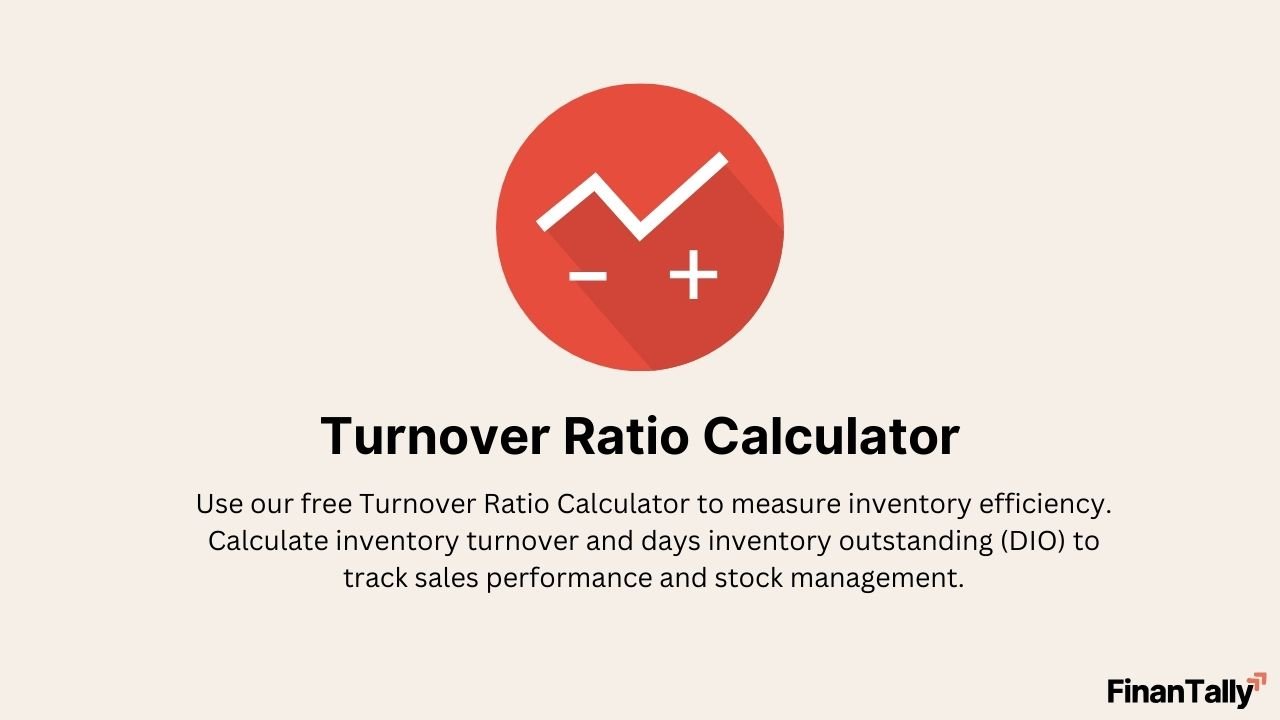Turnover Ratio Calculator – Measure Inventory Efficiency
Use our free Turnover Ratio Calculator to measure inventory efficiency. Calculate inventory turnover and days inventory outstanding (DIO) to track sales performance and stock management.
Inventory Turnover Ratio
10.00x
Excellent: High inventory efficiency
Days Inventory Outstanding (DIO)
36.50 days
Average days to sell inventory
Inventory Turnover Assessment
| Turnover | Rating | DIO |
|---|---|---|
| < 4x | Low Turnover | DIO > 90 days |
| 4x - 6x | Average | DIO 60-90 days |
| 6x - 10x | Good | DIO 36-60 days |
| > 10x | Excellent | DIO < 36 days |
The Turnover Ratio Calculator helps businesses determine how efficiently they manage inventory in relation to their sales. A higher turnover ratio means inventory is being sold quickly, while a lower ratio may indicate overstocking or weak sales. This tool is useful for retailers, wholesalers, and manufacturers who want to track inventory performance.
What is a Turnover Ratio?
The turnover ratio measures how efficiently a company or investment portfolio uses its assets or resources. It indicates how often specific assets, like inventory or accounts receivable, are replaced or cycled through within a period, typically a year. A higher ratio often suggests better efficiency, while a lower ratio may indicate inefficiencies.
Formula for Inventory Turnover Ratio
The Inventory Turnover Ratio is calculated by dividing Net Sales (Revenue) by Average Inventory.
Formula for Days Inventory Outstanding (DIO)
The Days Inventory Outstanding (DIO) shows how many days on average it takes to sell inventory. It is derived from the turnover ratio.
Example Calculation
Suppose a company has:
- Net Sales (Revenue): $500,000
- Average Inventory: $100,000
Step 1: Calculate Inventory Turnover Ratio
Step 2: Calculate Days Inventory Outstanding (DIO)
Final Result
- Inventory Turnover Ratio: 5
- Days Inventory Outstanding (DIO): 73 days
This means the company sells and replenishes its inventory five times a year and on average holds inventory for 73 days before it is sold.
FAQs
1. How is the Turnover Ratio calculated?
Turnover ratios are generally calculated by dividing a relevant income statement metric (e.g., sales or cost of goods sold) by the average value of the corresponding balance sheet item (e.g., inventory or receivables) over a specific period. For example, Inventory Turnover = Cost of Goods Sold ÷ Average Inventory. The result shows how many times the asset "turns over" in that period.
2. Why is the Turnover Ratio important for businesses?
Turnover ratios provide insights into operational efficiency. High ratios can indicate effective management of resources, such as quick inventory sales or timely collection of receivables, which improve cash flow. Low ratios may highlight issues like slow-moving inventory or poor credit policies, helping businesses identify areas for improvement.
3. How can a business improve its Turnover Ratio?
To improve turnover ratios, businesses can:
- Optimize inventory management to reduce excess stock and increase sales speed.
- Enhance credit policies to ensure faster collection from customers.
- Streamline operations to use assets more efficiently.
- Negotiate better payment terms with suppliers to balance cash outflows.

Related Calculators
Help Improve This Tool
Your suggestions help us make better tools for everyone.